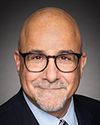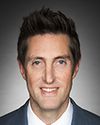Thank you, Madam Chair.
I thought it was going to be civil here, but the prettiest community, as we all know, is London, Ontario. We'll leave that aside. It's fine. You can have the town and I'll have the city.
Thank you very much, colleagues. It's very interesting to address you from this point of view, obviously.
It's my pleasure to be here.
I truly appreciate the work that all of you have done on this specific issue. Since time is limited, let me get straight into it.
While the commission has redistributed ridings in London, Ontario, in a way that ensures population numbers are within the desired range of 116,000 people, in the proposed London Centre it has not, in my opinion, met the requirement of abiding by an equally important principle: that every effort be made to ensure that communities of interest remain intact. The objection submitted here stems from this concern, one shared not only by me but by the city's mayor and various community members.
A few examples illustrate the point.
Neighbourhoods that have enjoyed a connection for several decades will now, should the proposed changes go through, be severed and placed into a different riding. One example is the Stoneybrook area. Residents within this geographic region use the same high schools, the same community centre, the same shopping centre and overlapping fire and ambulance services.
Equally important is the fact that approximately 37,000 Londoners will now live in a rural riding, the proposed Middlesex—London, which will be separated from the rest of London. This means their ability to raise concerns in common cause with fellow urban citizens is significantly diminished, if not done away with altogether.
As stated by Josh Morgan, London's mayor:
...my main concerns are centred around the reconfigured riding of Middlesex—London. Under this scenario, approximately 37,000 Londoners would lose a dedicated federal representative based in London. These constituents have distinct and unique urban concerns which are difficult to reconcile alongside those of predominantly rural areas....
London is indeed a city with a unique identity, concerns and challenges. All communities are. We are not talking, however, about a few hundred urban citizens moving into a rural riding, but 37,000 people. Carving off such a large portion of the city is simply inappropriate, if not irresponsible.
I do not discount for a moment the challenge facing the commission, and I do appreciate their work, yet it appears they have placed undue weight on the population quota and not enough importance on keeping intact established communities of interest, as we see in the most recent proposal for London Centre. In solving problems identified in other riding proposals, the commission has created a new and I think serious one.
The first proposal released by the commission in the summer of 2022 did not break communities of interest in the proposed London Centre. Furthermore, its population quota was within the range they set as acceptable. As such, I think it should serve as the alternative. This certainly would have an effect on neighbouring ridings; I'm not discounting that. I've also raised this objection with each area MP.
I'm happy to discuss these matters further during the allotted time for questions.
Thank you very much, colleagues, for considering the objections that I'm raising on behalf of constituents and on behalf of the city's mayor. It's a true pleasure to be at the committee today.






